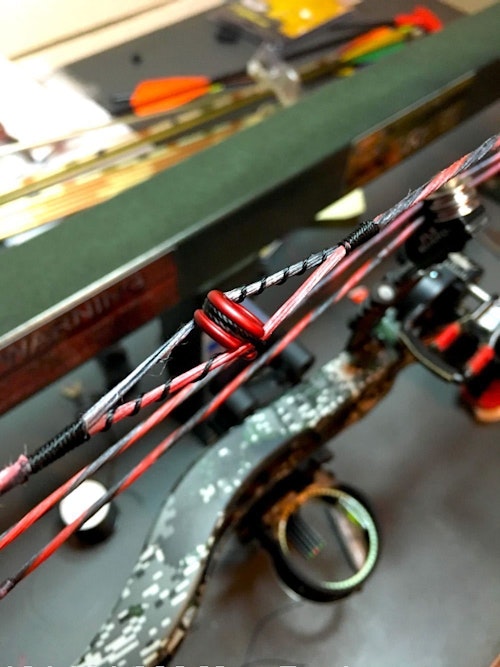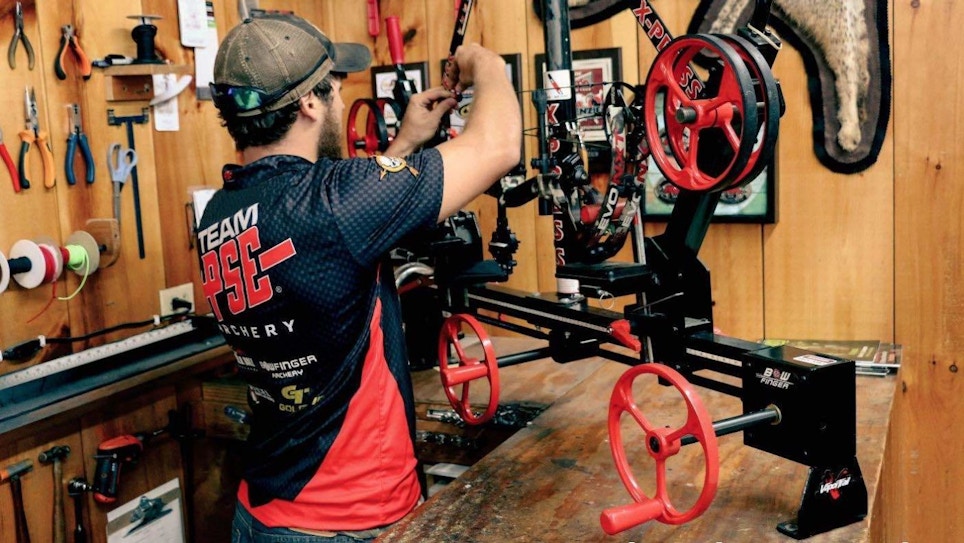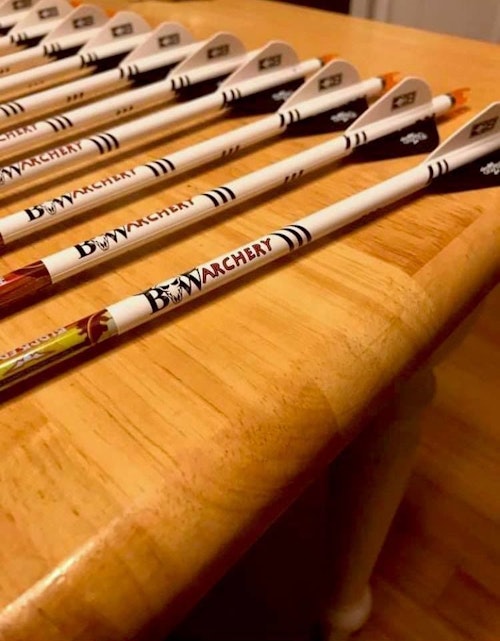Archers and bowhunters alike understand the importance of using high-quality, well-tuned equipment. Because most of them don’t know how to work on their bows themselves, they go to bow technicians at pro shops. They come for the service and in-person advice. And this makes a good bow tech valuable.
It’s important that bow techs are good at what they do. Like all professionals, they develop necessary skills, and learn important lessons, along the way. Here are 15 of those lessons that they should take to heart.
1. Take Certification Courses to Set You Apart
You can read books and research on your own, of course. But there are many private coaches and trainers who are willing to teach the trade. That’s the beauty of this ultra-friendly industry. Most of the time, people are nice.
There are other more official means of education, though. Those who wish to get into archery should take available training courses, such as the PSE Archery School (www.psearchery.com/pse-archery-school/). Taught by world-class archery experts, this is a shooting and technical course that covers advanced archery in both the compound and recurve departments.

2. Master Through Trial and Error
It’s important to learn through professional channels. That doesn’t mean you can’t learn on your own and as you go, though. Many of the best archery technicians have self-taught much of what they know. Or, at least, used credible online sources to answer their questions.
It’s important to not self-teach more dangerous tasks, though. And definitely don’t learn or practice a new skill on a customer’s equipment. Use your own gear to practice new techniques. That way, if things go awry, a customer isn’t angered or lost over it.
3. Listen to Those With More Experience
Everyone should have mentors. Those who came before typically have more experience. They oftentimes harbor a wealth of knowledge, and if you merely ask, they’re almost always willing to share some of it. This goes double for those who are hired to work for a shop owner who’s seen all sides of the business.
That being said, it’s important to exercise a bit of street smarts and know when someone is feeding you a line of baloney. Don’t take everything you hear as gospel, and certainly don’t act on any advice unless it’s sound information. Trust but verify, as they say.
4. Learn How to Scale Business Costs and Inventory
Another important takeaway is to balance business costs, inventory, and other expenses. Logan Beach understands the importance of this. As the owner of BW Archery in Bowling Green, Kentucky, he is a seasoned pro shop owner and bow technician. If it has cams, limbs, risers or strings, he works on it.
“Don’t get in too deep,” Beach said. “You don’t need $30,000 worth of merchandise to run a business. Focus on the basics and main-selling items. And don’t overstock. It’s 2021. If you order something, it can (usually) get to you in three days.”
To be fair, due to COVID-19, many archery manufacturers are still in backorder territory, though. Make sure you can get something in before committing to a customer.
5. Get Along with All Personality Types
People are different. No two men or women are just alike. Everyone has their strengths, weaknesses, and quirks. Learning to adapt to these is a part of life in a bow shop, especially if you’re a one-person operation.
“There are a million personalities out there, and you will meet them all,” Beach said. “Everyone from the good old boy down the road to the CEO will come in. Figuring out a person and how to mold the conversation so that they can understand it is everything. People don’t like to be wrong, but people really don’t like to pay a lot of money for something they don’t understand.”
6. Grasp How to Communicate With and Sell to Different Types of People
Just as it’s important to get along with all people, it’s important to know how to serve and sell to them, too. You’re running a business, after all. Discover what makes each customer tick. This is much easier with return customers. Then, learn to know what to say, and when to say it.
“Know your customer,” Beach said. “Take time to talk and swap stories. Understand the type of person they are, it will help you know how to sell to them and how to explain a process you’re doing if needed.”
Never take advantage of someone, though. Be a business owner, but a compassionate one. Understand each customer’s unique situation and needs. Never try to sell to them more than they can afford. That’s unacceptable.
“Companies are pricing our youth out of the hobby,” Beach said. “This will be detrimental for our sport. But that’s another topic altogether. And I get fired up on it.”
7. Have Patience With Customers
Sometimes, customers don’t know what they want or need. Other times, they know exactly what it is, and they want it yesterday. Still, sometimes walk-ins exhibit other challenging demeanors, problems and requests. Remember to always have patience with them, even the most difficult ones.
To combat this, be as helpful as you possibly can. Express excessive kindness. Be a good person. While a customer’s bad behavior is never excusable, your continued grace might wake them up to their own lack of kindliness and humility.
“Don’t try to run them in and out like cattle to make the sale,” Beach said. “Get to know them. Why did they get into hunting? Why do they enjoy it? What do they want to achieve with the purchase they have come to you about?”
Treating the unkind with kindness can change attitudes and hearts. It might even gain you a customer and friend for life.
8. Recognize That Some Customers Like to Complain
It’s important to realize that sometimes, the I’m-being-a-jerk light bulb just won’t turn on for some customers. They just like to complain. And that’s part of life as a bow technician. While you don’t have to love it, embracing it is part of the gig.
“You’ll always have a few that you can’t please, and it’s just how it goes,” Beach said. “You have to remember that you are the expert in this field, and not everyone will be able to understand the process as you will. They say the customer is always right, but they merely Googled it before entering the store. They are over your shoulder telling you what to do, and the last thing on your mind is that they are right.”
This is where your own personal resolve kicks in. Don’t stoop to their level. Don’t let them get the best of you. Keep your moral compass pointed in the right direction.

9. Don’t Rush Just to Please Others
Beach also expresses the importance of not rushing. Speeding up the process will cause you to mess up. Taking shortcuts and doing sub-par work just to make someone happy might get a thumb’s up initially, but it’ll quickly turn south.
Making this mistake does several things. First, customers receive a degraded product or service. Second, you’ll likely have to redo whatever job was rushed. And third, it will reflect negatively on you and your business.
10. Strive for Both Diversification and Specialization
In the past, many companies could just diversify or specialize. Most modern business owners are realizing that they have to do both, though. That might seem unattainable for some, but it isn’t outside the realm of possibility.
Start by specializing in something, such as compound bows. Be an expert at that. Offer as many lines and services as you can adequately manage. Don’t be afraid to diversify, though. Learn the ins and outs of traditional and crossbow archery, too. Serve not only big game hunters, but also small game hunters, and even bowfishing enthusiasts. Identify the major markets near you, and go after them.
“I’ve taken a step back and focus more on tuning and arrows and the smaller end,” Beach said. “We have many great archery shops that I encourage all my customers to go to and try bows. Everyone sells different brands, and it’s a perfect scenario for customer and shops. Speak out on price points and voice your opinions.”
Don’t be afraid to offer oddball products and services, too. If there isn’t much retail competition around, consider a limited volume of firearms and general hunting supplies. If you have the right customer base, it might lead to add-on and miscellaneous sales. At the very least, be willing to order non-stocked items that are asked for.
11. Know That Every Bow Is Different
No two bows are alike. Sure, technical similarities remain constant between bow models. It stops there, though. Once you start changing and tuning to fit a customer, it’s a completely unique bow.
“Every bow has its differences,” Beach said. “Depending on cam systems and brand, it can dictate how the tuning process will go. After a while, you learn a few tricks of the trade between binary cam systems, hybrid cams, and so on. The end goal is a well-tuned and groomed bow for the customer. No matter the difference in bows, the goal is the same — please the customer and help with what they want to achieve.”
12. Refrain from Feuds With the Competition
While it’s important to do what’s best for your brand and livelihood, don’t do so at the cost of your humanity. Help your fellow man, even if he is a competitor.
“It seems we get in this mindset where we have competition,” Beach said. “In our industry, that is the greatest downfall, as we already have so many against what we do. Work together. At the end of the day, it’s a common goal to help out fellow outdoorsmen and women. Leave the money part out of it and see the greater goal. Help other shops, especially locally.”
13. Balance Work and Life
Never get so invested in work that it affects you or your personal life. Leave work at work. Be able to turn it off come quitting time.
“Everyone loves their hobby but making your hobby your job is totally different,” Beach said. “If you can’t balance your personal life and your business, you will be miserable. Know the difference and set boundaries.”
That can be very difficult to do, especially for the self-employed. Learn to manage it. Don’t sap the fun out of work, or life itself.
14. Understand That This Career Path Is a Grind
Many jobs are hard work. Some are physically taxing. Others are emotionally or mentally laborsome. Becoming a bow technician can include all of the above. Beach says it can be a real grind.
From an owner’s perspective, his biggest advice is learning to balance personal life and work. He says the busiest times are often when you’d like to be in the woods yourself, and if you don’t set times and days off, the joy and passion for archery work can fade, and that can certainly reflect in your attitude and performance.

15. Never Stop Learning
No matter how skilled or knowledgeable a bow technician is, there’s still always something they don’t know. Mastering archery is a never-ending pursuit, and the most successful experts rarely forget that. Continue taking courses, observing tutorials, and even researching the latest advancements and technologies in the archery world.
This also applies to continually learning how to run a business, and who your customers are. Catering to them is the gig, after all.
“Figuring out your customer will solve a million future problems, and help you get their needs taken care of quickly and efficiently,” Beach said. “I’ve been doing it that way for years, and I’d rather have consistent customers that I can help and get fixed up than many customers who buy something and are gone in five minutes. The more time we spend with them the better, especially the younger generation. Instilling the outdoors can start within the walls of a local shop.”







